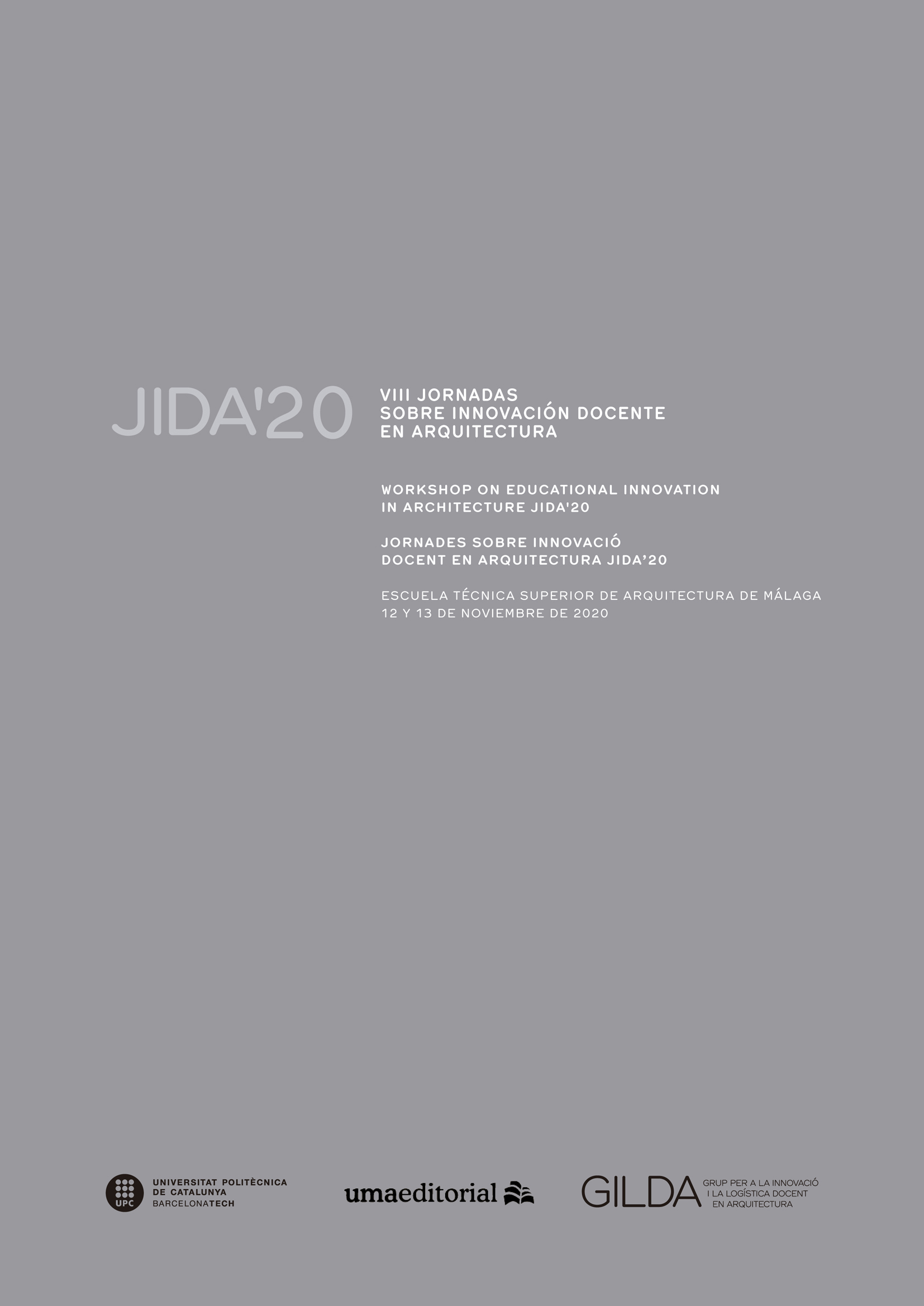Zoe entra en casa. La biología en la formación en arquitectura
DOI:
https://doi.org/10.5821/jida.2020.9330Resumen
Los conocimientos en la etapa formativa para la posterior práctica arquitectónica se actualizan rigurosamente por la preparación y autoexigencia del profesorado pero, estructuralmente, un cambio radical de planteamiento acaece con dificultad en la renovación de los Planes de Estudios. Una lógica disciplinar distante de los problemas actuales enfoca conservadoramente la docencia y, por extensión, la profesión y, más allá, la propia definición de la Arquitectura. Durante este siglo XXI, los desafíos sociales, económicos y ambientales no han logrado promover cambios sustanciales en la idea de lo que un arquitecto debe ser para sus sociedades. La actual crisis pandémica aboca a ampliar con conocimiento de biología la formación de arquitectos. El máster en Ciudad y Arquitectura Sostenibles, de la ETS Arquitectura de Sevilla, enseña desde 2010 a sus estudiantes a proyectar con materia viva y a evaluar sus consecuencias, en una experiencia transdisciplinar que aspira a ser pionera como modelo para futuras actualizaciones de los Planes de Estudio, incluso en Grado.
Citas
AAVV, Libro Blanco. TÃtulo de Grado En Arquitectura (Madrid: Aneca, 2001), I <https://doi.org/10.1017/CBO9781107415324.004>
AGAMBEN, G, (2001) Medios Sin Fin: Notas Sobre La PolÃtica, Valencia: Ensayo (Pre-Textos)
AÃT-TOUATI, F., “Nous Ne Sommes Pas Le Nombre Que Nous Croyions Être†– Relire Les Microbes de Bruno Latour’, AOC Media - Analyse Opinion Critique <https://aoc.media/critique/2020/08/18/nous-ne-sommes-pas-le-nombre-que-nous-croyions-etre-relire-les-microbes-de-bruno-latour/> [accessed 19 August 2020]
BRESSANI, M. (2007) “Observations on Architectural Biology: The Gen(H)Ome Projectâ€, en Log, 9.9 119–27
D’ALEMBERT, J L R, (1860) Discurso Preliminar a La Enciclopedia (Madrid: Editorial Calpe, 1954)
DUQUE, F, (2001) Arte Público y Espacio PolÃtico, Madrid: Arte y Estética Ediciones Akal
MAYORAL GONZÃLEZ, E. (2015) Arquitecturas Biosintéticas. La Acción Arquitectónica a Través de La IngenierÃa de Lo Vivo y Lo No Vivo. Málaga: Recolectores Urbanos
MAYORAL GONZÃLEZ, E., and TAPIA MARTÃN, C. ‘Extended biotechnological bodies within a posthumanistic framework’, in McLuhan Galaxy Conference: understanding media today : Barcelona, May, 23rd-25th, conference proceedings, 2010, pp. 562–78 <http://dialnet.unirioja.es/servlet/articulo?codigo=4804264> [accessed 16 April 2015]
MERTINS, D. (2007) “Where Architecture Meets Biology: An Interview with Detlef Mertinsâ€, University of Pennsylvania Departmental Papers, 110–31
SZULKIN, M, J MUNSHI-SOUTH, and CHARMANTIER, A. (2020) Urban Evolutionary Biology Oxford University Press
TAPIA MARTÃN, C. (2020) “La Ciudad Bajo El Signo de Afrodita Pandemosâ€, Geopolitica(S), 11 189–208 <https://doi.org/10.5209/GEOP.69315>
TAPIA MARTÃN, C., ed., (2015) MCAS, Pensamiento HomeoteÌcnico : Por Una EÌtica de Las Relaciones No Hostiles y No Dominadoras, ColeccioÌn Conferencess [CSS] ; 005 Sevilla: Recolectores Urbanos
TAPIA MARTÃN, C. (Coord). (2020) De Forma et Vita. La Arquitectura En La Relación de Lo Vivo Con Lo No Vivo. Sevilla: Athenaica
TAPIA MARTÃN, C., and RODRIGUES ALVES, M. ‘Deus Ex Machina. Formar En Arquitectura Para Un Mundo Que (Aún) No Existe’, in A: Garcia Escudero, Daniel; Bardà Milà , Berta, Eds. ‘V Jornadas Sobre Innovación Docente En Arquitectura (JIDA’17), Escuela Técnica Superior de Arquitectura de Sevilla, 16 y 17 de Noviembre de 2017’., 2017, pp. 32–43 <https://doi.org/10.5821/jida.2017.5193>






















